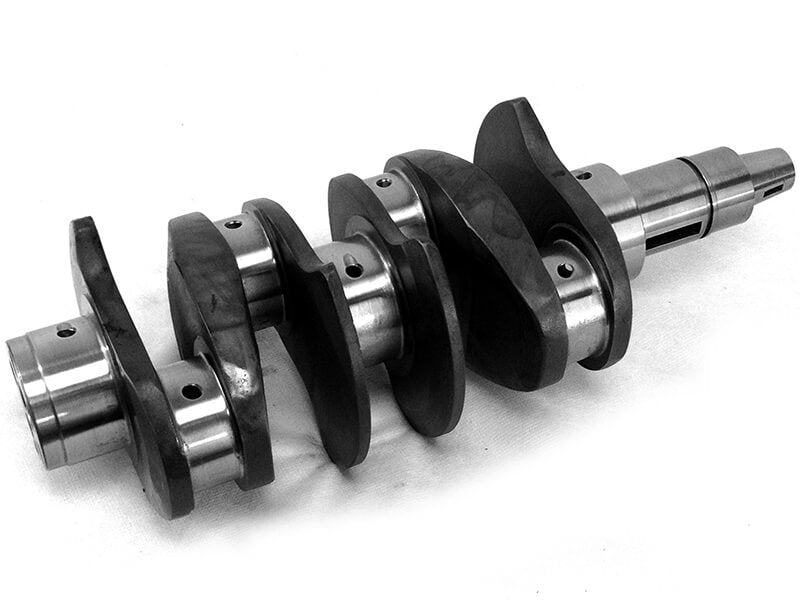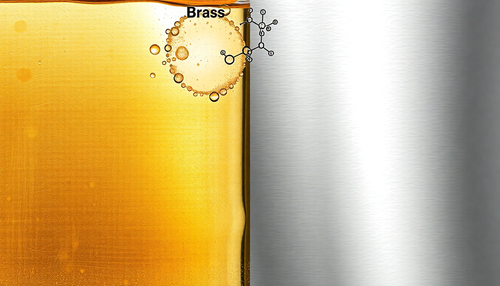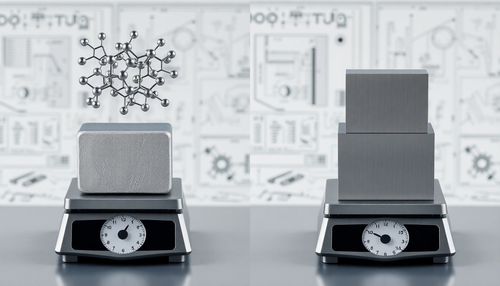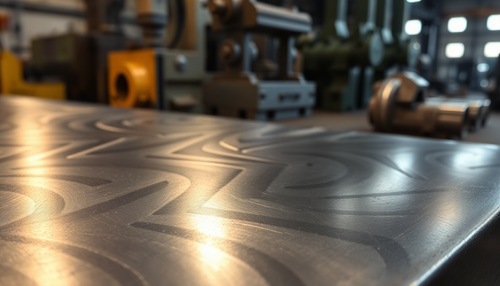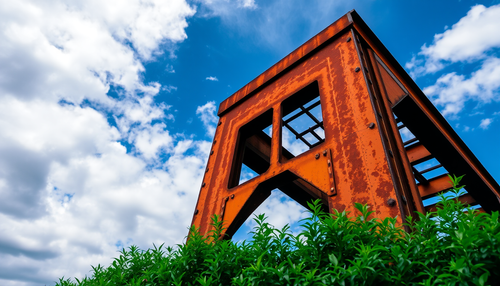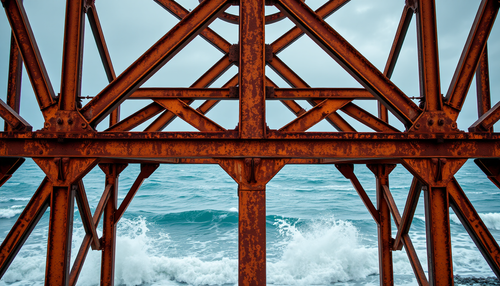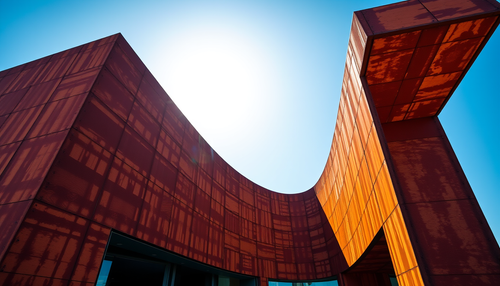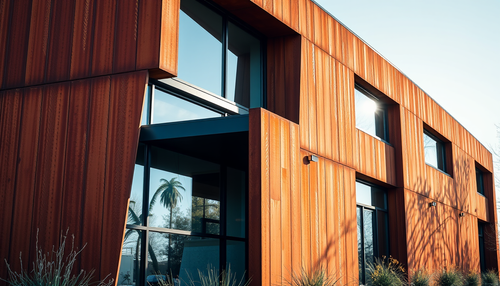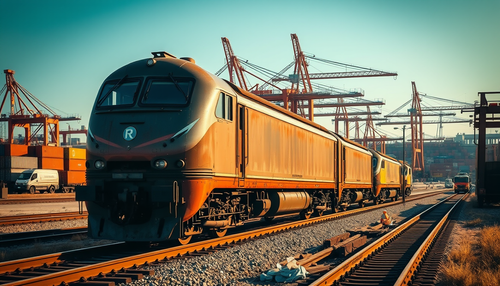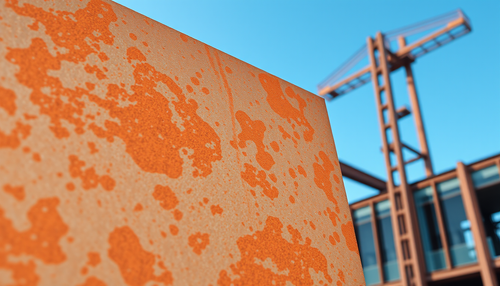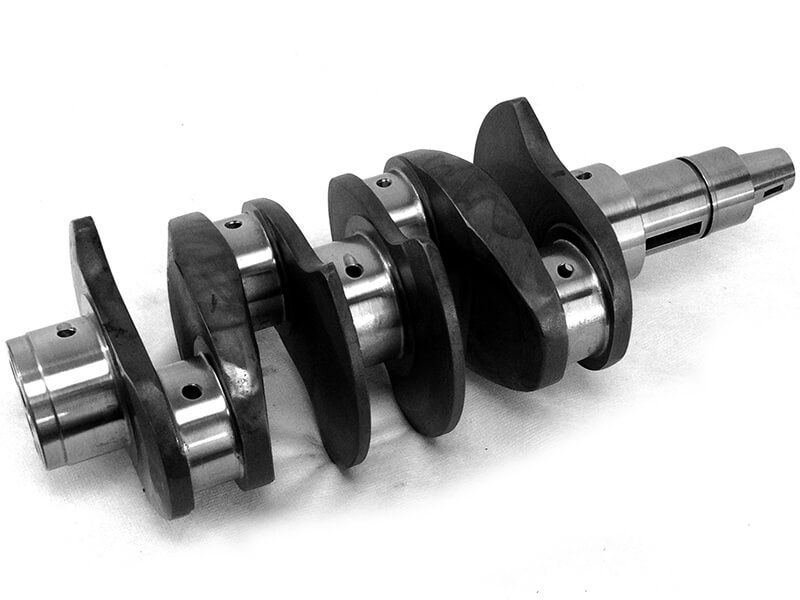
Steel SAE AISI 4340 (UNS G43400)
AISI 4340 steel (UNS G43400) is an ultra-high-strength, medium-carbon, low-alloy steel, which combines deep hardenability, high ductility, toughness and strength, and has high fatigue and creep resistance. It is not particularly affected by tempering and embrittlement and has good strength retention at high temperatures and is not easily softened. In thin sections, this steel is air hardened. In practice, it is usually seasoned with oil.
4340 Alloy Steel Data Sheet
The following tables and lists provide data sheets and specifications of 4340 alloy steel, including chemical composition, physical and mechanical properties, heat treatment, welding, etc.
Chemical composition
The chemical composition of AISI 4340 steel material is listed in the following table based on casting analysis.
| 4340 Chemical Composition, % | ||||||||||
| ASTM | Steel Grade (UNS) | W | Yes | Mn | P (≤) | S (≤) | No | Cr | Mo | Grades |
| ASTM A29/A29M | Alloy Steel 4340 (UNS G43400) | 0.38-0.43 | 0.15-0.35 | 0.60-0.80 | 0.035 | 0.04 | 1.65-2.00 | 0.70-0.90 | 0.20-0.30 | Steel, carbon and alloy bars, hot forged |
| ASTM A322 | Steel bars, alloys, standard grades | |||||||||
| ASTM A519/A519M | Seamless Carbon and Alloy Steel Mechanical Tubing | |||||||||
| ASTM A646/A646M | Premium quality alloy steel blooms and billets for aircraft and aerospace forgings | |||||||||
AISI 4340 steel properties
The tables below list the properties of AISI 4340 steel, including physical and mechanical properties.
Physical properties
The physical properties of 4340 alloy steel are provided in the following lists, including density, thermal expansion, modulus of elasticity, thermal conductivity, specific heat capacity, and electrical resistance.
Grades:
- 10 -6 ·K -1 = 10 -6 /K
- 1Ω mm²/m = 1 μΩ m
- 1 g/cm3 = 1 kg/dm3 = 1000 kg/m3
- 1 GPa = 1kN/mm2
- 1 MPa = 1 N/mm2
| Physical properties | ||
| Density, g/cm3 (lb/in.3) | 7.85 (0.284) | Conditions |
| Melting point, °C (°F) | 1505 (2740) | – |
| Specific heat capacity, J/kg·K (Btu/lb ·°F) | 475 (0.114) at 20°C | – |
| Modulus of elasticity, GPa (ksi) | 205 (29700) | – |
| Bulk modulus, GPa (ksi) | 140 (20300) | – |
| Poisson's ratio | 0.29 | – |
| Shear modulus, GPa (ksi) | 80 (11600) | – |
| Thermal conductivity, W/m·K (Btu/ft · h ·°F) | 44.5 (25.73) | – |
| Coefficient of thermal expansion, 10 -6 /K (μin./in. ·°F) | 12.3 to 20-100℃ (68-212°F) | Hardened oil, tempered 600 °C (1110 °F) |
| 12.7 to 20-200℃ (68-392°F) | ||
| 13.7 to 20-400℃ (68-752°F) | ||
| 14.5 to 20-600℃ (68-1112°F) | ||
| 11.2 to -100 to 20°C (-148 to 68°F) | Hardened oil, tempered 630 °C (1170 °F) | |
| 10.4 from -150 to 20°C (-238 to 68°F). | ||
| 12.4 to 20-200℃ (68-392°F) | ||
| 13.6 to 20-400℃ (68-752°F) | ||
| 14.3 to 20-600℃ (68-1112°F) | ||
Mechanical properties
The mechanical properties of 4340 steel are listed in the following tables.
| AISI 4340 Mechanical Properties | ||||||
| Steel | Illness | Tensile strength, MPa (ksi), ≥ | Yield strength, MPa (ksi), ≥ | Elongation by 50 mm (2 in.), ≥ | Reduction in area, %, ≥ | Hardness, HB, ≤ |
| 4340 | Normalized to 870°C (1600°F) | 1282 (186) | 862 (125) | 12.2 | 36.3 | 363 |
| Annealed at 810°C (1490°F) | 745 (108) | 470 (68) | 22.0 | 50.0 | 217 | |
| Oil quenched at 800°C (1475°F) and tempered at 540°C (1000°F) | 1207 (175) | 1145 (166) | 14.2 | 45.9 | 352 | |
| Effects of mass on the mechanical properties of 4340 steel | |||||
| Quenched and tempered oil: Austenitized at 845 °C (1550 °F); tempered to 425°C (800°F). | |||||
| Section diameter | Tensile strength, ≥ | Yield strength, ≥ | Elongation by 50 mm (2 in.), ≥ | Reduction in area, ≥ | Hardness, ≤ |
| mm (in.) | MPa (ksi) | MPa (ksi) | % | % | HB |
| 13 (0.5) | 1460 (212) | 1380 (200) | 13 | 51 | |
| 38 (1.5) | 1450 (210) | 1365 (198) | 11 | 45 | |
| 75 (3) | 1420 (206) | 1325 (192) | 10 | 38 | |
| Water quenched and tempered: 75 mm (3 in.) diameter bar austenitized at 800 °C (1475 °F); 100 and 150 mm (4 and 6 in.) diameter bars austenitized at 815 °C (1500 °F). All sizes tempered to 650°C (1200°F). Test samples taken from the middle radius. | |||||
| Section diameter | Tensile strength, ≥ | Yield strength, ≥ | Elongation by 50 mm (2 in.), ≥ | Reduction in area, ≥ | Hardness, ≤ |
| mm (in.) | MPa (ksi) | MPa (ksi) | % | % | HB |
| 75 (3) | 1055 (153) | 930 (135) | 18 | 52 | 340 |
| 100 (4) | 1035 (150) | 895 (130) | 17 | 50 | 330 |
| 150 (6) | 1000 (145) | 850 (123) | 16 | 44 | 322 |
| Typical mechanical properties of 4340 steel | |||||||
| Oil quenched at 845 °C (1550 °F) and tempered at different temperatures | |||||||
| Quenching temperature | Tensile strength, ≥ | Yield strength, ≥ | Elongation by 50 mm (2 in.), ≥ | Reduction in area, ≥ | Hardness, ≤ | Toughness | Izod Impact Energy |
| °C (°F) | MPa (ksi) | MPa (ksi) | % | % | HB | CDH | J (ft lbf) |
| 205 (400) | 1980 (287) | 1860 (270) | 11 | 39 | 520 | 53 | 20 (15) |
| 315 (600) | 1760 (255) | 1620 (235) | 12 | 44 | 490 | 49.5 | 14 (10) |
| 425 (800) | 1500 (217) | 1365 (198) | 14 | 48 | 440 | 46 | 16 (12) |
| 540 (1000) | 1240 (180) | 1160 (168) | 17 | 53 | 360 | 39 | 47 (35) |
| 650 (1200) | 1020 (148) | 860 (125) | 20 | 60 | 290 | 31 | 100 (74) |
| 705 (1300) | 860 (125) | 740 (108) | 23 | 63 | 250 | 24 | 102 (75) |
| The transverse tensile properties of air- and vacuum-arc cast 4340 alloy steel, billet size, and hot reduction amount were not available. | ||||
| Quenching temperature | Tensile strength, ≥ | Yield strength, ≥ | Elongation by 50 mm (2 in.), ≥ | Reduction in area, ≥ |
| °C (°F) | MPa (ksi) | MPa (ksi) | %, ≥ | % |
| Molten air | ||||
| 230 (450) | [1945(282) | 1585 (230) | 6.0 | 14 |
| 480 (900) | 1380 (200) | 1190 (173) | 8.0 | 16 |
| 540 (1000) | 1240 (180) | 1125 (163) | 10.0 | 22 |
| Remelted vacuum arc | ||||
| 230 (450) | 1930 (280) | 1635 (237) | 6.5 | 17 |
| 480 (900) | 1380 (200) | 1210 (175) | 9.0 | 20 |
| 540 (1000) | 1240 (180) | 1100 (160) | 10.5 | 24 |
| Longitudinal mechanical properties of bars made from remelted 4340 steel | ||||||
| Fusion method | Tensile strength, MPa (ksi), ≥ | Yield strength, MPa (ksi), ≥ | 4D stretching, %, ≥ | Reduction in area, %, ≥ | Charpy V-notch impact energy at -12 °C (10 °F), J (ft lbf) | Hardness, HRC |
| Remelted vacuum arc | 1210 (175) | 1120 (163) | 16.4 | 61.2 | 65 (48) | 37 |
| The bars were normalized to 900°C (1650°F), oil quenched from 845°C (1550°F) and tempered for 2 hours at 541°C (1005°F). All samples taken from the mean radius. | ||||||
| Cyclic and monotonic properties of as-received and heat-treated 4340 alloy steel | |||||||
| SAE steel | Illness | Tensile strength | Reduction in area, ≥ | Modulus of elasticity | Yield strength | Cyclic strain hardening exponent | |
| Note | Brinell Hardness, HB | MPa (ksi) | % | GP (10 6 psi) | MPa (ksi) | ||
| 4340 | 242 | As received | 825 (120) | 43 | 192 (27.8) | 467 (67.7) | 0.17 |
| 409 | Tempered + Tempered | 1467 (213) | 38 | 200 (29) | 876 (127) | 0.13 | |
| Relative Gouging Abrasion Resistance in ASTM G 81 Jaw Crusher Test | |||||
| Steel | Heat treatment | Laboratory A | Laboratory B | ||
| Wear rate | Hardness, HB | Wear rate | Hardness, HB | ||
| 4340 steel | Quenched and tempered oil (650°C or 1200°F) | 0.788 | 321 | 0.716 | 340 |
| Quenched and tempered oil (205°C or 400°F) | 0.262 | 555 | 0.232 | 520 | |
| The relationship between the weight loss of the sample and the weight loss of the standard material T-1 martensitic steel plate. High values indicate low abrasion resistance. | |||||
4340 Steel Heat Treatment
Heat treatment of 4340 alloy steel, including: normalizing, annealing, hardening, tempering, spheroidizing, stress relieving, etc. (heat treatment 4340)
- Normalization: Heat to 845 to 900 °C (1550 to 1650 °F) and hold for a period of time, which depends on the thickness of the section; air cooling.
- Annealing: Heating to 830 to 860 °C (1525 to 1575 °F) and holding for a period of time, which depends on the section thickness or furnace load; oven cooling.
- Spheroidization: The preferred schedule is to preheat to 690 °C (1275 °F) for 2 h, increase the temperature to 745 °C (1375 °F) for 2 h and cool to 650 °C (1200 °F) and hold for 6 hours, cool the oven to about 600°C (1100°F), and finally air cool to room temperature. Another arrangement is to heat the temperature to 730 to 745 °C (1350 to 1375 °F), hold it for several hours, and then cool the oven to room temperature.
- Hardening: Heat to 800 to 845 °C (1475 to 1550 °F) for 15 minutes (minimum 15 minutes) per 25 mm (1 inch) thickness; season in oil below 65°C (150°F) or season in molten salt at 200 to 210°C (390 to 410°F), hold for 10 minutes and then cool in air below 65°C (150°F ). F).
- Quenching: Hold at 200 to 650 °C (400 to 1200 °F) for at least half an hour; air cooling. The temperature and time at temperature depend mainly on the final hardness required.
- Stress Relieving: After straightening, forming or processing, the stress of the part can be released at a temperature of 650 to 675 °C (1200 to 1250 °F).
- Baking: To avoid hydrogen embrittlement, plated parts should be baked for at least 8 hours at 185 to 195°C (365 to 385°F) as soon as possible after plating.
- Forging: 4340 steel is generally forged at a temperature of 1,065 to 1,230 °C (1,950 to 2,250 °F); After forging, the pieces can be cooled in air in a dry place or preferably in an oven.
AISI 4340 Steel Welding
AISI 4340 steel has good weldability. It can be easily gas or arc welded, but electrodes of the same composition must be used. Because 4340 alloy steel is air hardened, welded parts must be annealed or normalized and tempered immediately after welding.
The high hardness of 4340 alloy steel requires the material to be welded in the annealed or tempered state and then heat treated to resist the formation of martensite and cold cracking. However, as in engine shaft applications, under quenched and tempered conditions, 4340 steel typically uses high preheat in low hydrogen processes. Preheating or interpass heating of the weld metal and areas affected by heat is recommended. Hydrogen control is also essential to prevent weld cracking. Extremely clean vacuum molten steel is the first choice for welding.
| Preheat and interpass temperature range in °C (°F) to indicate section thickness | |||
| Steel | ≤13 mm (0.5 in.) | 13-25 mm (0.5-1 in.) | 25-50 mm (1-2 in.) |
| 4340 | 290-345 (550-650) | 315-370 (600-700) | 315-370 (600-700) |
| Data is for low hydrogen welding processes and low hydrogen filler metals. | |||
| Typical transverse tensile properties of selected quenched and tempered ARC welded joints of low alloy steel | ||||||||
| Steel | Welding process | Thickness, mm (in.) | Filter metal | Quenching temperature, °C (°F) | Welded joint | Elongation by 50 mm (2 in.), % | Approximate tensile strength of base metal, MPa (ksi) | |
| Tensile strength, MPa (ksi) | Yield strength, MPa (ksi) | |||||||
| 4340 | Gas Metal Arc Welding (GMAW) | 25.4 (1) | 4340 | 510 (950) | 1307 (189.5) | 1251 (181.5) | 11 | 1310 (190) |
Machinability and Machining
| Hardness and machinability ratings (cold drawn steel) | ||||
| Steel (UNS) | Machinability Classification | Illness | Typical hardness range, HB | Type of microstructure |
| 4340 (UNS G43400) | 50 | Annealed and cold drawn | 187/241 | BA |
| E4340 (UNS G43406) | ||||
| Based on cutting with high speed tool steels and a 100% machinability rating for 1212 steel. Type A: predominantly lamellar pearlite and ferrite; Type B: predominantly spheroidized. | ||||
| Rated speeds and feeds for turning a variety of steels and cast irons with single-point and high-speed steel (HSS) case tools | |||||||||
| Material | Hardness, HB | Illness | Cutting depth, mm (in.) | high speed steel tool | Tool material | ||||
| Speed | To feed | ||||||||
| m/min | sfm | mm/rotation | in./rev | ISO | AISI | ||||
| 4340, 1340, 1345, 4042, 4047, 4140, 4142, 4145, 4147, 50B40, 50B44, 5046, 50B46, 5140, 5145, 5147, 81B45, 8640, 8642, 8645, 86B45, 8740, 8742 | 175-225 | Hot rolled, annealed or cold drawn | 1 (0.04) | 41 | 135 | 0.18 | 0.007 | S4, S5 | M2, M3 |
| 4 (0.15) | 32 | 105 | 0.4 | 0.015 | |||||
| 8 (0.30) | 24 | 80 | 0.5 | 0.02 | |||||
| 16 (0.625) | 20 | 65 | 0.75 | 0.03 | |||||
| High strength forged steels: 4340, 300M, 4330V, 4340Si, 98BV40, D6ac, H11, H13 | 225-300 | Annealed | 1 (0.04) | 26 | 85 | 0.18 | 0.007 | S4, S5 | M2, M3 |
| 4 (0.15) | 20 | 65 | 0.4 | 0.015 | |||||
| 8 (0.30) | 15 | 50 | 0.5 | 0.02 | |||||
| 16 (0.625) | 12 | 40 | 0.75 | 0.03 | |||||
| Rated speeds and feeds for turning a variety of steels and cast irons with single-point and carbide-tipped case tools | ||||||||||||||||
| Material | Hardness, HB | Illness | Carbide Tool | |||||||||||||
| Uncoated | Coated | |||||||||||||||
| Speed | To feed | Tool material class | Speed | To feed | Tool material class | |||||||||||
| Soldier | Indexable | |||||||||||||||
| m/min | sfm | m/min | sfm | mm/rotation | in./rev | ISO | W | m/min | sfm | mm/rotation | in./rev | ISO | W | |||
| Medium carbons: 4340, 1340, 1345, 4042, 4047, 4140, 4142, 4145, 4147, 50B40, 50B44, 5046, 50B46, 5140, 5145, 5147, 81B45, 8640, 8642, 8 645, 86B45, 8740, 8742 | 175-225 | Hot rolled, annealed or cold drawn | 115 | 375 | 150 | 500 | 0.18 | 0.007 | P10 | C-7 | 200 | 650 | 0.18 | 0.007 | CP10 | CC-7 |
| 90 | 300 | 120 | 400 | 0.50 | 0.020 | P20 | C-6 | 160 | 525 | 0.40 | 0.015 | CP20 | CC-6 | |||
| 73 | 240 | 95 | 315 | 0.75 | 0.030 | P30 | C-6 | 120 | 400 | 0.50 | 0.020 | CP30 | CC-6 | |||
| 58 | 190 | 76 | 250 | 1.00 | 0.040 | – | – | – | – | – | – | – | – | |||
| High strength forged steels: 4340, 300M, 4330V, 4340Si, 98BV40, D6ac, H11, H13 | 225-300 | Annealed | 105 | 350 | 135 | 450 | 0.18 | 0.007 | P10 | C-7 | 185 | 600 | 0.18 | 0.007 | CP10 | CC-7 |
| 84 | 275 | 105 | 350 | 0.40 | 0.015 | P20 | C-6 | 135 | 450 | 0.40 | 0.015 | CP20 | CC-6 | |||
| 66 | 215 | 84 | 275 | 0.50 | 0.020 | P30 | C-6 | 105 | 350 | 0.50 | 0.020 | CP30 | CC-6 | |||
| 52 | 170 | 69 | 225 | 0.75 | 0.030 | P40 | C-6 | – | – | – | – | – | – | |||
| Rated speeds and feeds for turning a variety of steels and cast irons with ceramic tools | ||||||||
| Material | Hardness, HB | Illness | Cutting depth, mm (in.) | Speed | To feed | Type of ceramic | ||
| m/min | sfm | mm/rotation | in./rev | |||||
| 4340, 1340, 1345, 4042, 4047, 4140, 4142, 4145, 4147, 50B40, 50B44, 5046, 50B46, 5140, 5145, 5147, 81B45, 8640, 8642, 8645, 86B45, 8740, 8742 | 175-225 | Hot rolled, annealed or cold drawn | 1 (0.040) | 520 | 1700 | 0.13 | 0.005 | Cold pressed alumina |
| 4 (0.150) | 350 | 1150 | 0.25 | 0.010 | Cold pressed alumina | |||
| 8 (0.300) | 260 | 850 | 0.40 | 0.015 | Hot pressed cermet | |||
| High strength forged steels: 4340, 300M, 4330V, 4340Si, 98BV40, D6ac, H11, H13 | 225-300 | Annealed | 1 (0.040) | 440 | 1450 | 0.13 | 0.005 | Hot pressed cermet |
| 4 (0.150) | 265 | 875 | 0.25 | 0.010 | Hot pressed cermet | |||
| 8 (0.300) | 205 | 675 | 0.40 | 0.015 | Hot pressed cermet | |||
| Rated speeds and feeds for turning a variety of steels and cast irons with high-speed steel and carbide cutting and forming tools | ||||||||||||||
| Material | Hardness, HB | Illness | Speed | Feed, mm/rev (in/rev) | Tool material class | |||||||||
| Cutting tool width | Form tool width | |||||||||||||
| m/min | sfm | 1.5 mm (0.062 in.) | 3 mm (0.125 in.) | 6 mm (0.250 in.) | 12 mm (0.500 in.) | 18 mm (0.750 in.) | 25 mm (1.00 in.) | 35 mm (1.50 in.) | 50 mm (2.00 in.) | ISO | AISI or C | |||
| Medium carbon steel 4340, 1340, 1345, 4042, 4047, 4140, 4142, 4145, 4147, 50B40, 50B44, 5046, 50B46, 5140, 5145, 5147, 81B45, 8640, 8642, 8 6 45, 86B45, 8740, 8742 | 175-225 | Hot rolled, annealed or cold drawn | 29 | 95 | 0.038 (0.0015) | 0.046 (0.0018) | 0.056 (0.0022) | 0.046 (0.0018) | 0.041 (0.0016) | 0.038 (0.0015) | 0.033 (0.0013) | 0.028 (0.0011) | S4, S5, P40, M40 | M2, M3, C-6 |
| 95 | 305 | |||||||||||||
| 4340, 300M, 4330V, 4340Si, 98BV40, D6ac, H11, H13 | 225-300 | Annealed | 18 | 60 | 0.036 (0.0014) | 0.043 (0.0017) | 0.053 (0.0021) | 0.043 (0.0017) | 0.038 (0.0015) | 0.036 (0.0014) | 0.030 (0.0012) | 0.025 (0.001) | S4, S5, P40, M40 | M2, M3, C-6 |
| 58 | 190 | |||||||||||||
| Speeds and feeds for trepanning deep holes of various steels with high-speed tool steels and carbide tools | ||||||||
| Material | Hardness, HB | Illness | Speed | To feed | Tool material class | |||
| m/min | sfm | mm/rotation | in./rev | ISO | AISI or C | |||
| Medium Carbon Steel 4340, 1340, 1345, 4042, 4047, 4140, 4142, 4145, 4147, 50B40, 50B44, 5046, 50B46, 5140, 5145, 5147, 81B45, 8640, 8642, 8 6 45, 86B45, 8740, 8742 | 175-225 | Hot rolled, annealed or cold drawn | 18 | 60 | 0.15 | 0.006 | S4, S5 | M2, M3 |
| 115 | 375 | 0.15 | 0.006 | P30 | C-6 | |||
| 325-375 | Normalized or quenched and tempered | 9 | 30 | 0.10 | 0.004 | S9, S11 | T15, M42 | |
| 90 | 300 | 0.13 | 0.005 | P30 | C-6 | |||
| Feeds and speeds for broaching various steels with high-speed tool steels and carbide tools | |||||
| Material | Hardness, HB | Illness | Speed, m/min (sfm) | Chip load, mm/tooth (in./tooth) | Tool material class, ISO (AISI or C) |
| Medium carbon steels: 4340, 1330, 1335, 1340, 1345, 4027, 4028, 4032, 4037, 4042, 5155, 5160, 51B60, 6150, 81B45, 8625, 4047, 4130, 4135, 4 1 37, 4140, 4142, 4145, 4147, 4150, 8627, 8630, 8637, 8640, 8642, 8645, 4161, 4427, 4626, 50B40, 50B44, 5046, 50B46, 50B50, 86B45, 8650, 8655 , 8660 , 8740, 8742, 5060, 50B60, 5130, 5132, 5135, 5140, 5145, 5147, 5150, 9254, 9255, 9260, 94B30; Low carbon steels: 4012, 4023, 4024, 4118, 4320, 4419, 4422, 4615, 4617, 4620, 4621, 4718, 4720, 4815, 4817, 4820, 5015, 5115, 5120, 611 8, 8115, 8617, 8620 , 8622, 8822, 9310, 94B15, 94B17; High carbon steels: 50100, 51100, 52100, M-50 |
125-175 | Hot rolled, annealed or cold drawn | 7.5 (25) | 0.075 (0.003) | S4, S2 (M2, M7) |
| 325-375 | Normalized or quenched and tempered | 3 (10) | 0.05 (0.002) | S9, S11 (T15, M42) | |
| 175-225 | Hot rolled, annealed or cold drawn | 6 (20) | 0.10 (0.004) | S4, S2 (M2, M7) | |
| 325-375 | Normalized or quenched and tempered | 3 (10) | 0.05 (0.002) | S9, S11 (T15, M42) | |
| 175-225 | Hot rolled, annealed or cold drawn | 6 (20) | 0.10 (0.004) | S4, S2 (M2, M7) | |
| 325-375 | Normalized or quenched and tempered | 3 (10) | 0.05 (0.002) | S9, S11 (T15, M42) | |
Forms
SAE AISI 4340 steel is normally used in places where there are severe conditions and heavy parts that require high strength, and can be widely used as billet, rod, bar, forging, plate, tube and welding wire. AISI 4340 steel can also be produced as lightweight plates and castings. Typical applications include screws, screws and other fasteners. Gears, pinions, shafts and similar mechanical components; engine crankshafts and connecting rods; and landing gears and other important structural components of aircraft.
Equivalent
ASTM AISI 4340 steel equivalent to SAE, European standard (German DIN, British BSI, French NF), Japanese JIS and Chinese GB (for reference).
| Equivalent to AISI 4340 | |||||||||||
| USA | European Union | China | Japan | ISO | |||||||
| Standard | Note (UNS) | Standard | Note | Standard | Steel name (steel number) | Standard | Note | Standard | Note | Standard | Note |
| AISI SAE; ASTM A29/A29M; ASTM A322; ASTM A519/A519M; ASTM A646/A646M |
4340 (UNS G43400) | SAE | AMS6414 | GB/T 3077 | 40CrNi2Mo | JIS G 4053 | SNCM439 | ||||

